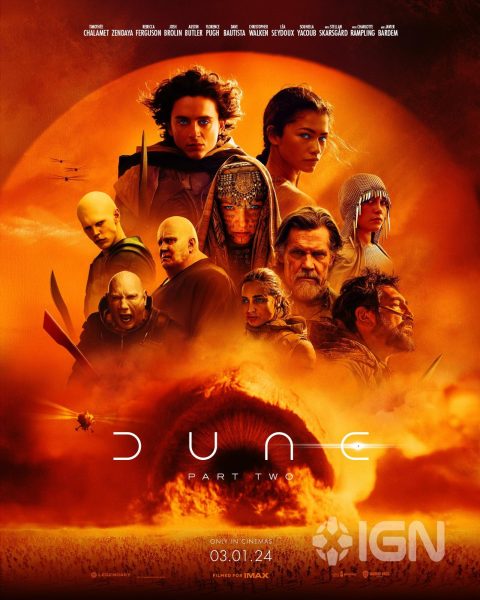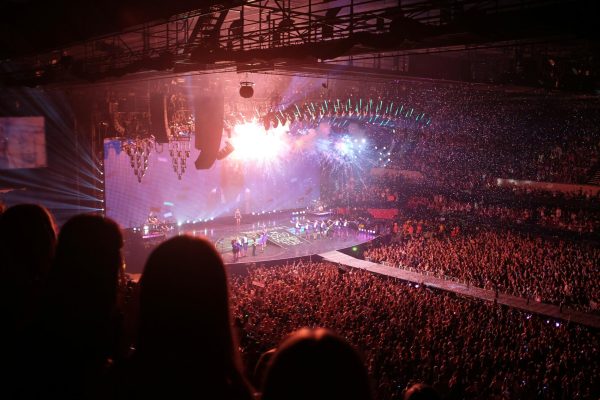- Limelight
- Limelight / Culture
- Limelight / Culture / Pop Culture
- Limelight / Digital
- Limelight / Events
- Limelight / Features
- Limelight / Profiles
- Limelight / Reviews
- Limelight / Theatre
How an era of recession changed movie theaters forever
The world of cinema has changed ever since the COVID-19 pandemic, and things are still changing today.
December 9, 2021
Since the creation of movie theaters, the way audiences watch films has remained the same. For years, the process has been that studios release the films in theaters, and after a certain period, those movies will be available for purchase on streaming or in physical form.
It wasn’t until 2020, and the COVID-19 pandemic, that movie studios and theaters were forced to change the way they do business. With the rise of streaming services and many companies such as AMC, Cinemark and Regal Cinemas shutting down, many thought that would be the end of movies on the big screen. Fortunately, movie theaters have survived, but the pandemic forever changed them.
Back in 2019, theaters had broken the global box office record reaching profits of $42.5 billion. That was a very surprising achievement considering streaming services were also going forward with full steam. People had a vast catalog of movies to watch at home, but it seemed the preferred way of experiencing films was still theatrically, and then the pandemic came.
Many movie theaters across the nation and worldwide were forced to close doors. As a result, studios were now faced with the hard decision to postpone their films or release them on streaming.
There were downsides to both options. If they choose to postpone a film, the studios will have to spend millions of additional dollars marketing the movie for its new release date. If they release it on streaming, the movie will not make nearly as much revenue since they will lose all the profit from repeated viewings.
Consequently, some major movie studios like Universal made the unheard-of decision of releasing films in theaters and VOD (Video on Demand) on the same day. This model clearly failed, and now movie studios had to wait while productions for future films were also halted.
After many long months of quarantine and a vaccine on the horizon, selected theaters started to open back up. Studios knew that many people were not yet comfortable watching a film at a theater like they used to, and because of that, the industry started experiencing changes that, until not long ago, were considered impossible.
The first major news came when Disney announced that some of their most anticipated films, such as “Mulan” and “Black Widow,” would release in cinemas and on Disney+ at the same time. Warner Bros took an even more drastic approach announcing that their entire 2021 slate of films would have a day-and-date release in theaters and on HBO MAX.
This new approach studios were taking broke the trust of many artists and creators involved in those films. Scarlett Johansson began a lawsuit against Disney, arguing her contract was infringed with the Disney+ release of “Black Widow,” and critically acclaimed director Christopher Nolan ended his partnership with Warner Bros. moving on to Universal.
More recently, there was another major change in the film industry. Until less than a year ago, studios had to respect the 90-day theatrical window imposed by the theaters. That meant that for at least three months, a movie playing in theaters had to be exclusive. Disney, however, struck a deal, and “Marvel’s Shang-Chi” and “Free Guy” only had to play 45 days exclusively in theaters before they were available on streaming. Paramount Pictures, Warner Bros. and Sony Pictures have also adopted the same practice with the release of their upcoming films.
However, even though there were many bumps along the way, the future of movie theaters looks promising. With Marvel’s “Shang-Chi” opening to $71.4 million and “Venom: Let there be Carnage” and “Eternals” opening to similar numbers, there is a growing interest in watching movies in theaters again.
There is still a lot of ground to cover, however. Just recently, a study commissioned by three film research companies (Quorum, Cultique and Fanthropolgy) found out that 49 percent of moviegoers have still come back once to a movie theater since the pandemic began. That is a huge difference from the numbers we were used to seeing in 2019, but as time passes and Covid-19 cases decrease, people will feel more confident and safe going back to the theaters.
Perhaps a true test will come with the release of the new Marvel movie “Spider-Man: No Way Home.” According to the ticket website Fandango, the newest Spider-Man movie has the biggest presale number for any film since 2019, “Avengers: Endgame,” and it also broke the presale record in the pandemic era previously held by “Black Widow” in just two hours. Those numbers are encouraging when it comes to the survival of movie theaters.
Over the last two years, theaters had no option but to adapt. They have experienced many obstacles, and because of those challenges, the industry has changed forever. With studios shortening the theatrical window and the possibility of films having day-and-date streaming service releases, audiences are experiencing films like never before. The future of movie theaters is not as certain as it used to be.

















